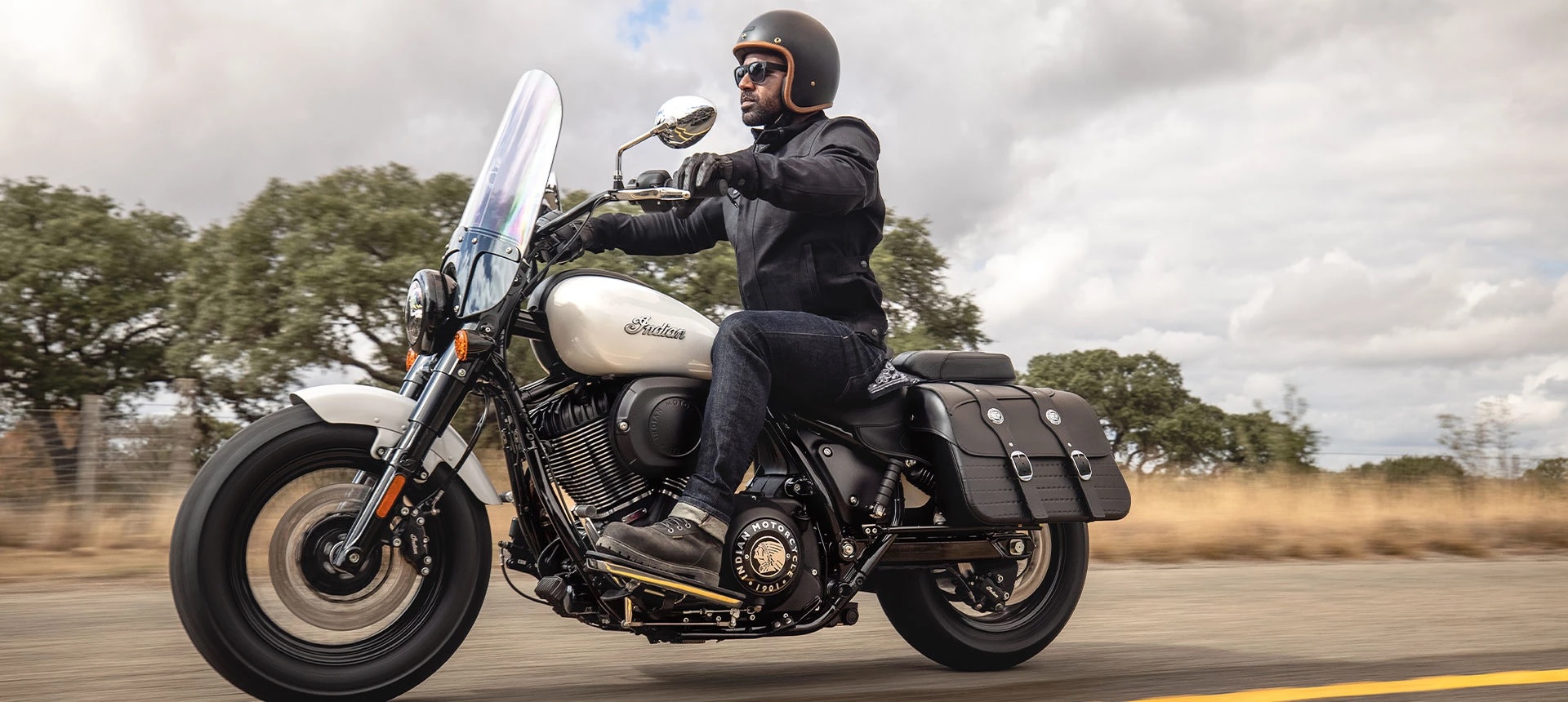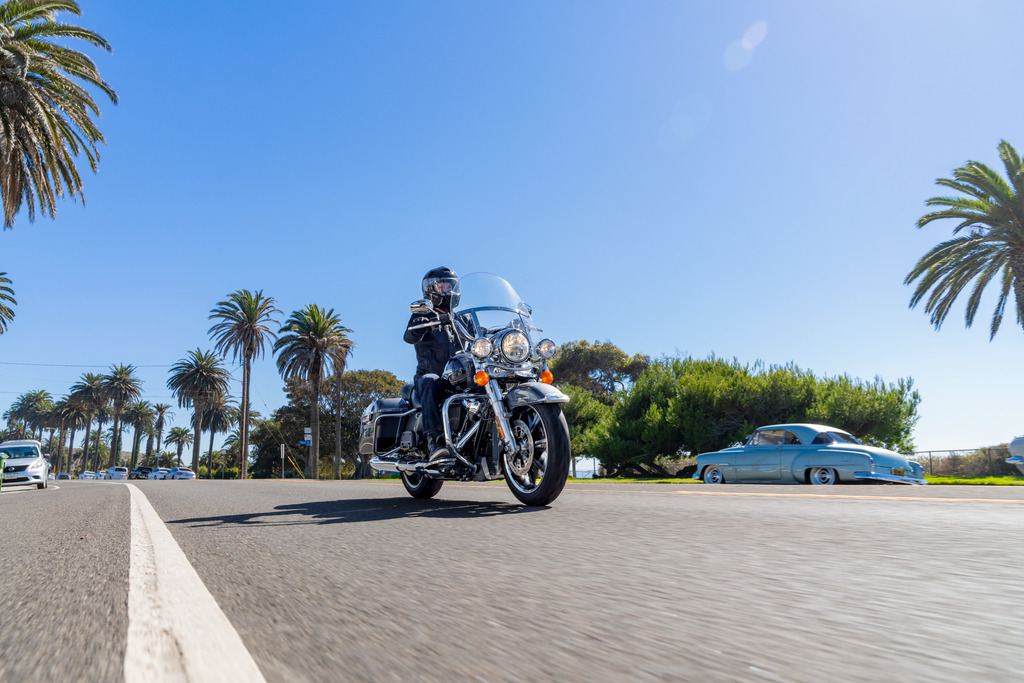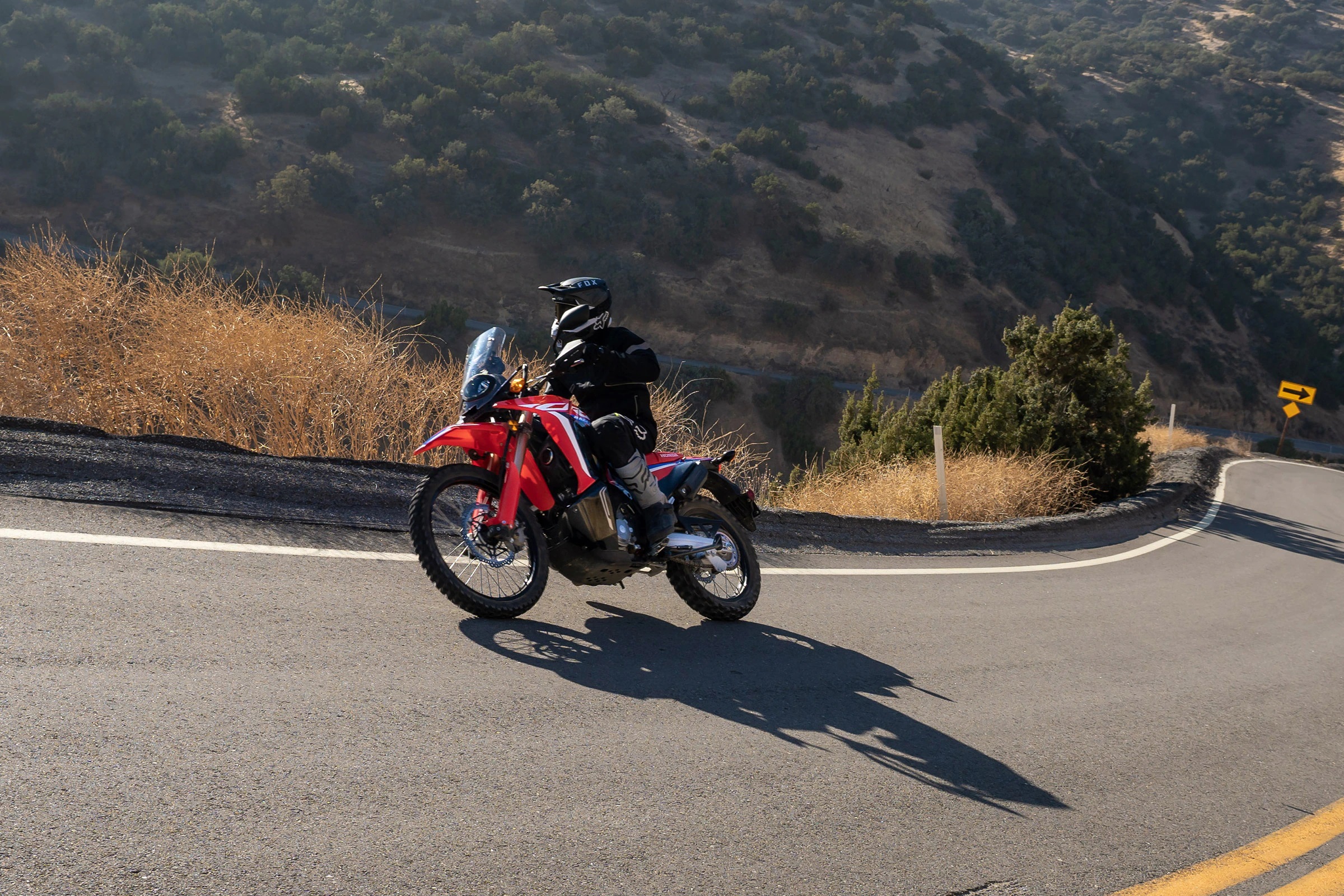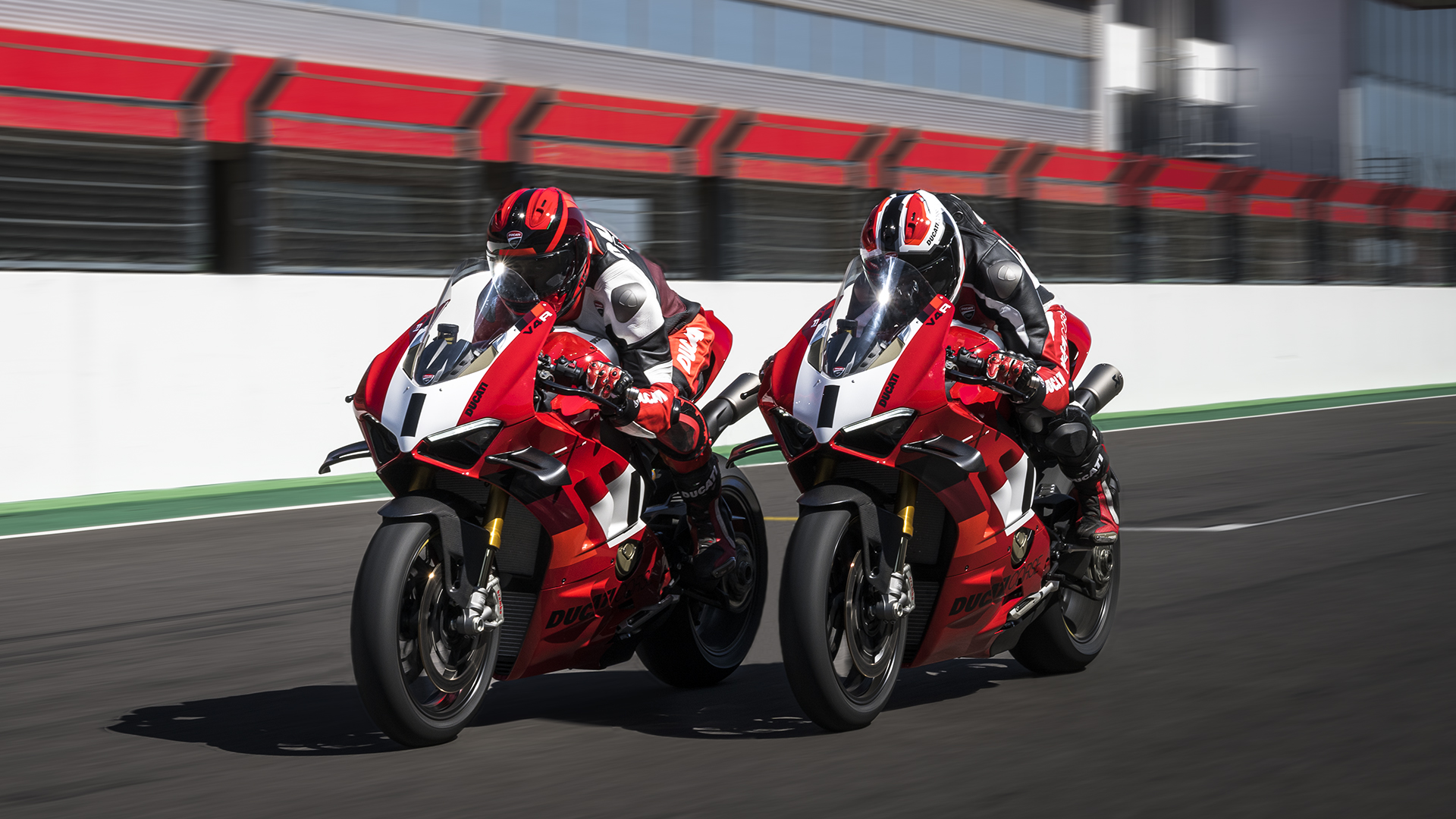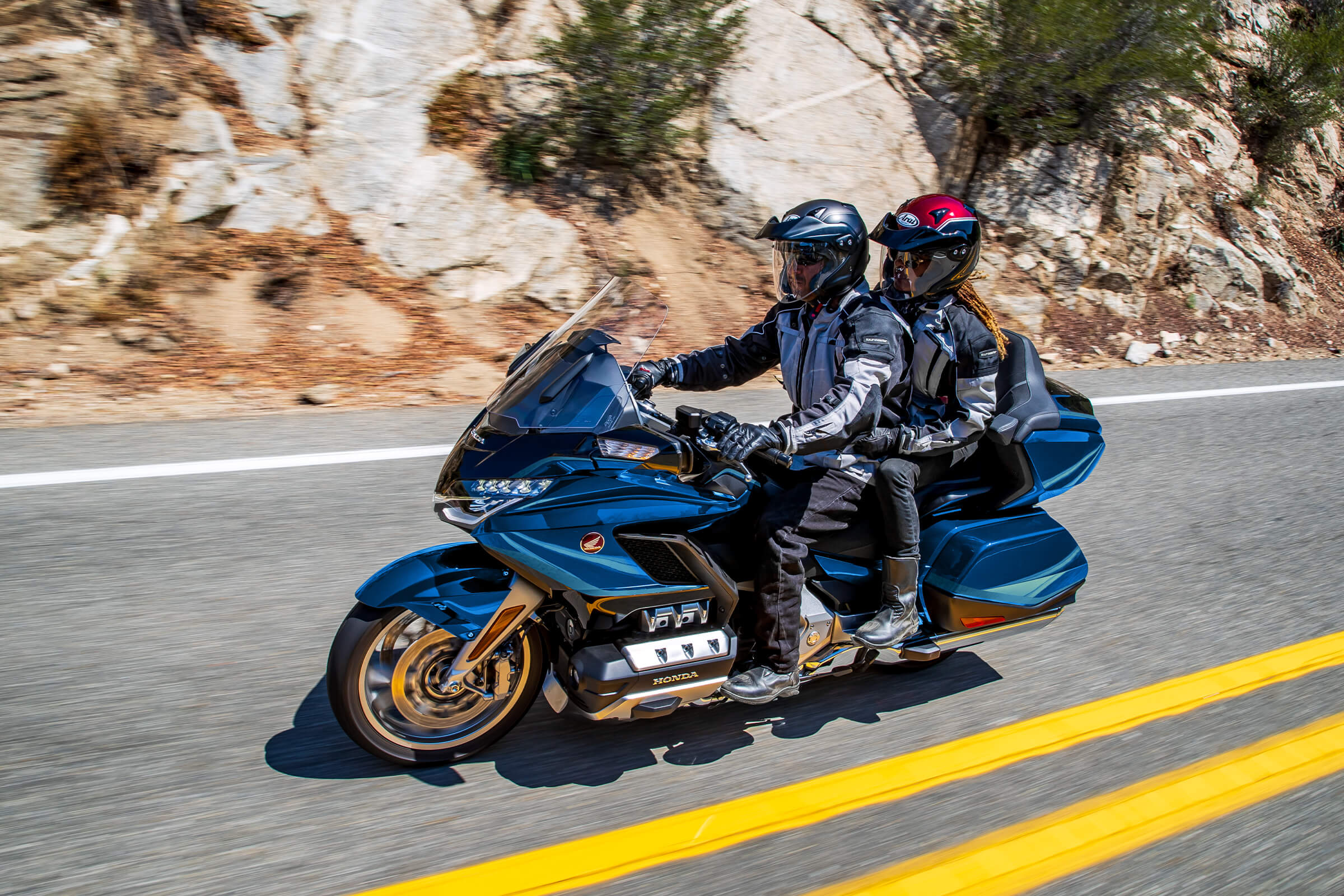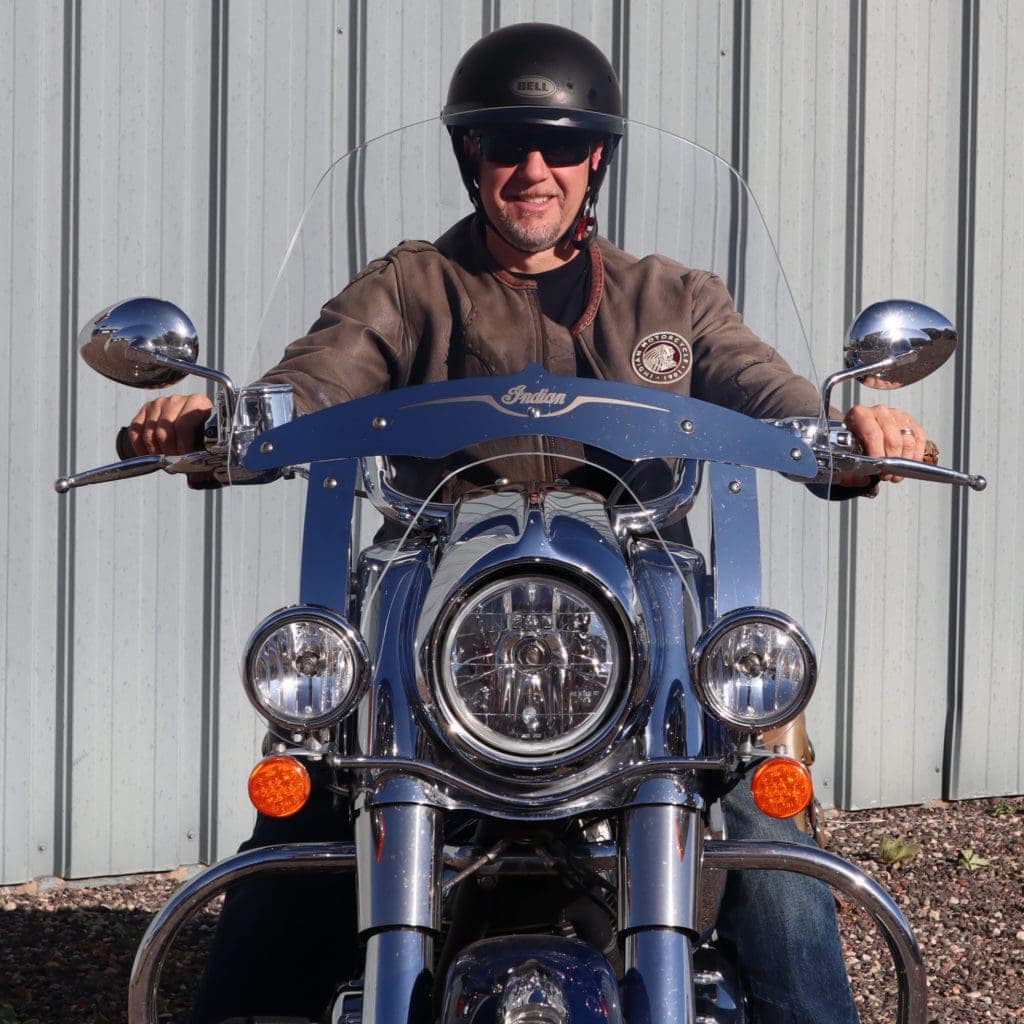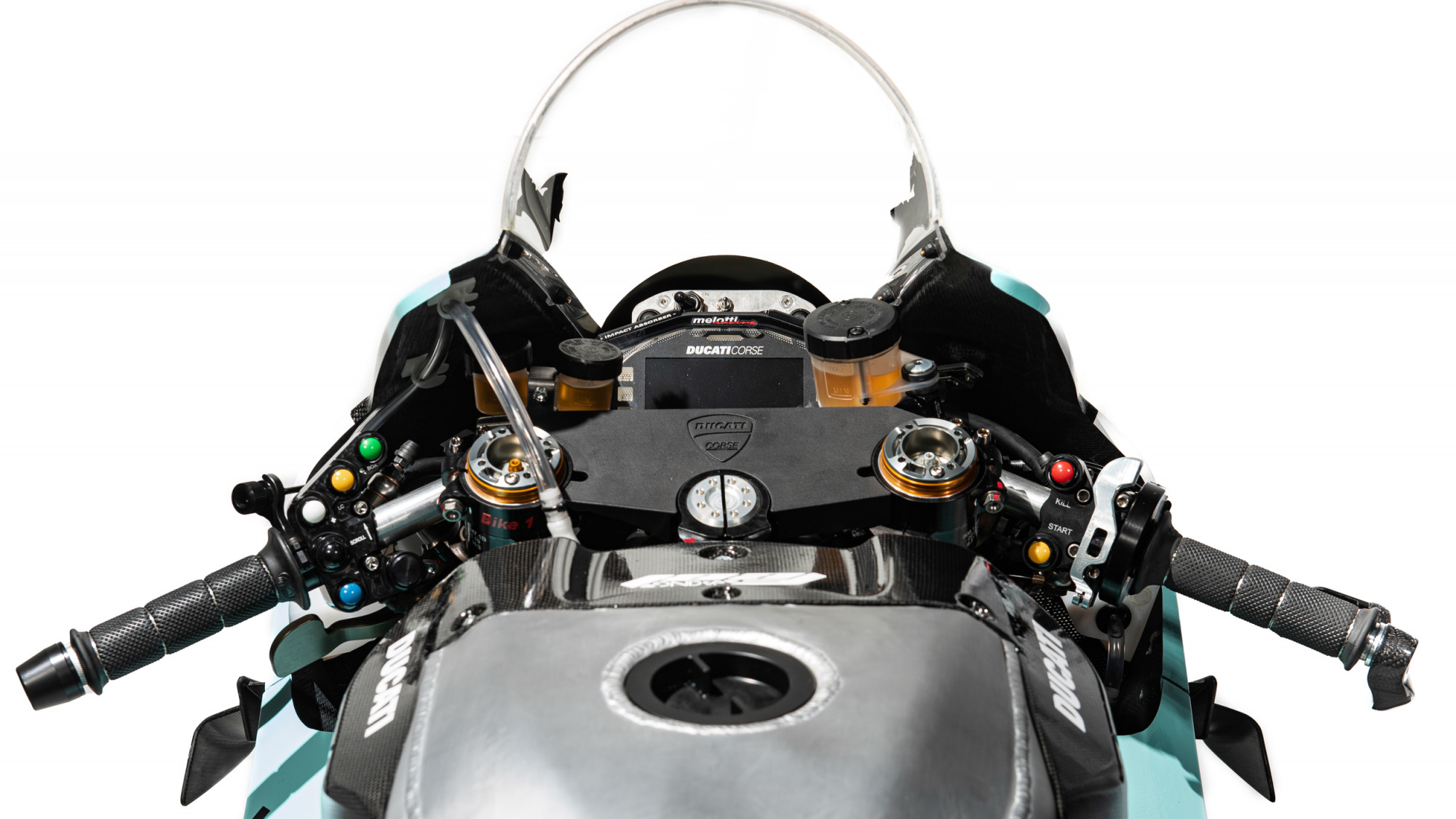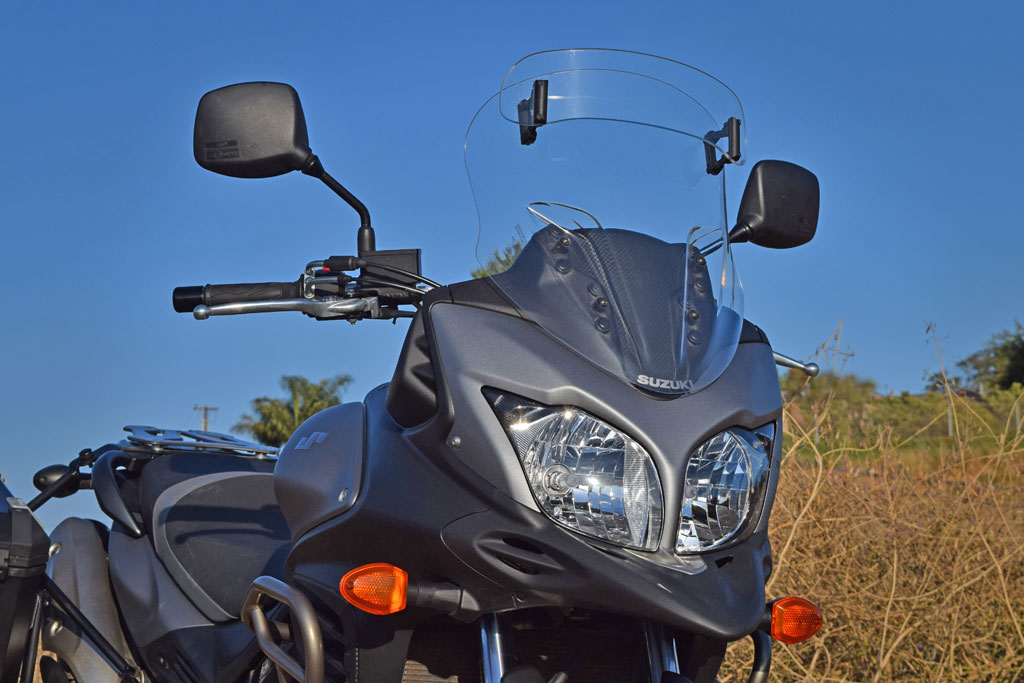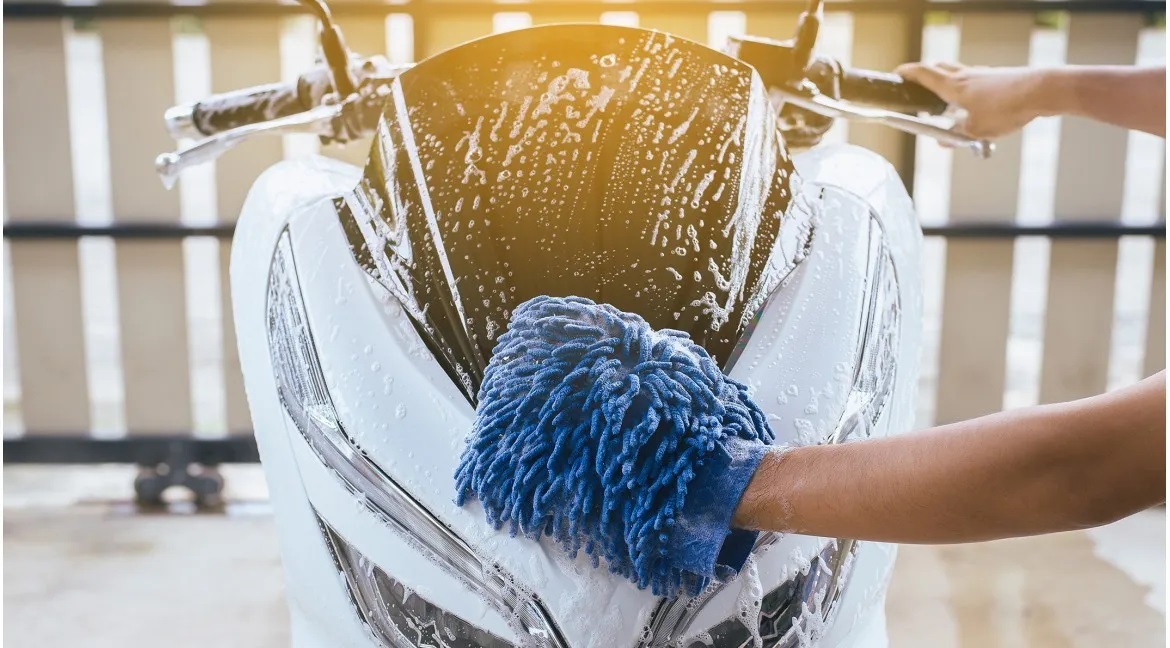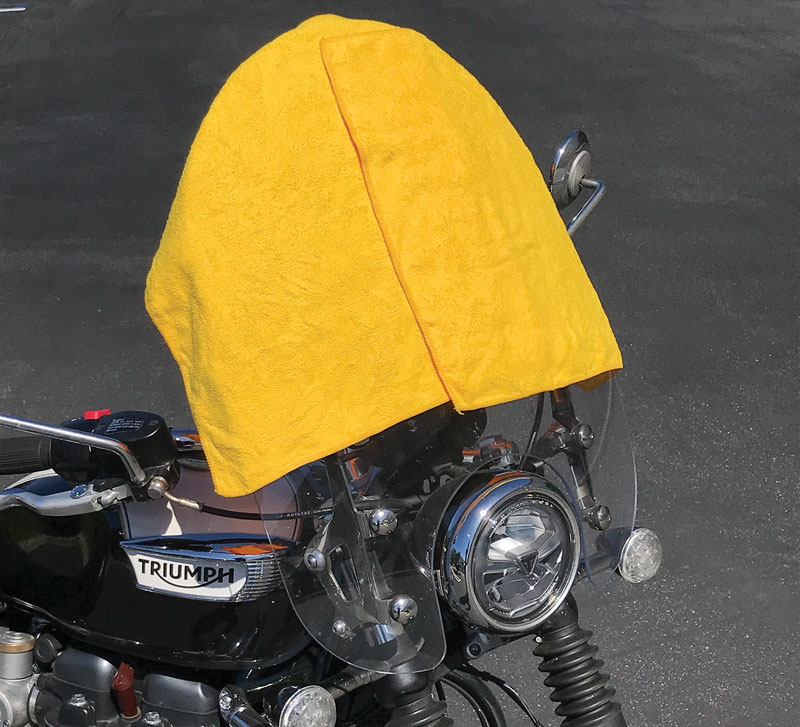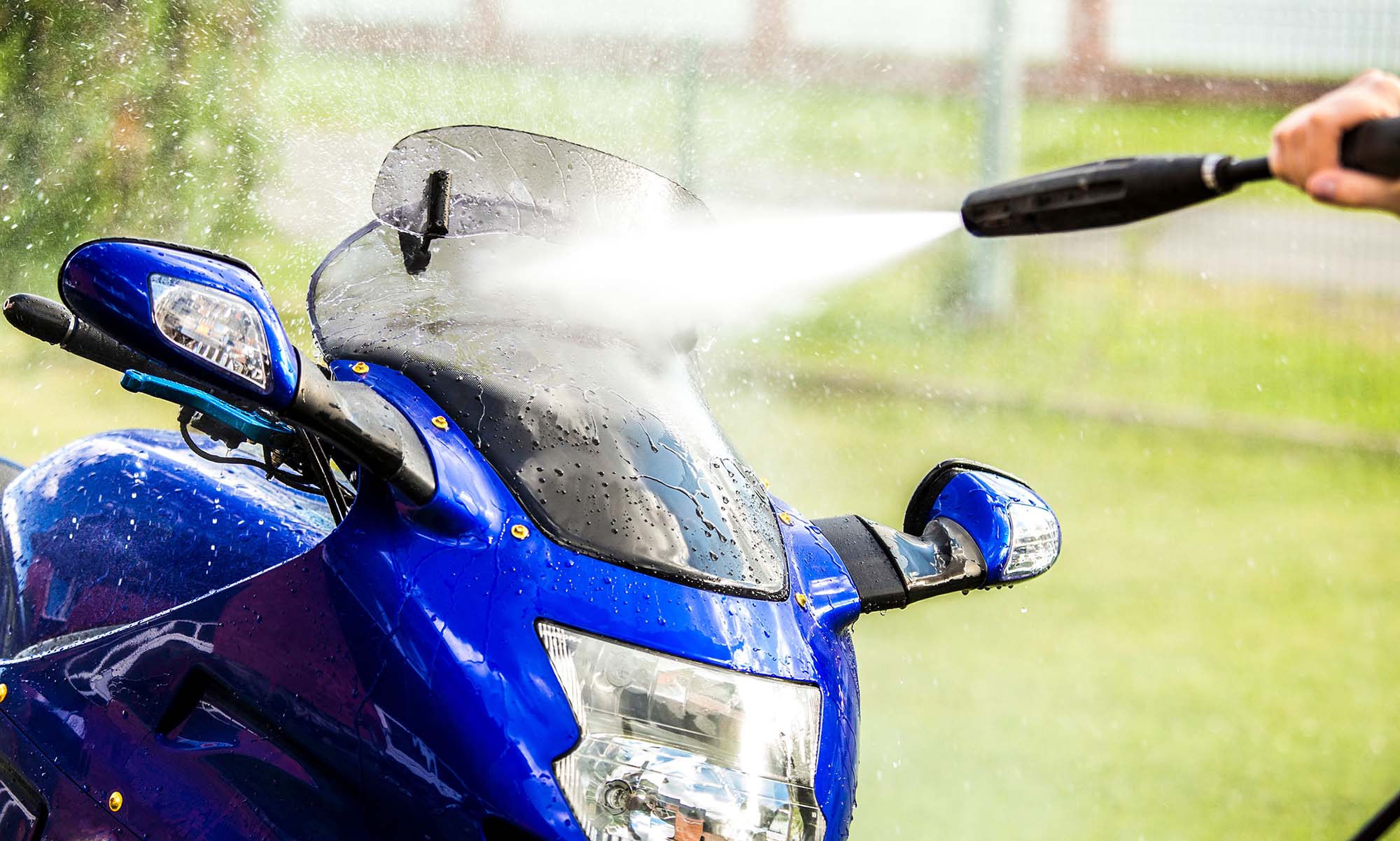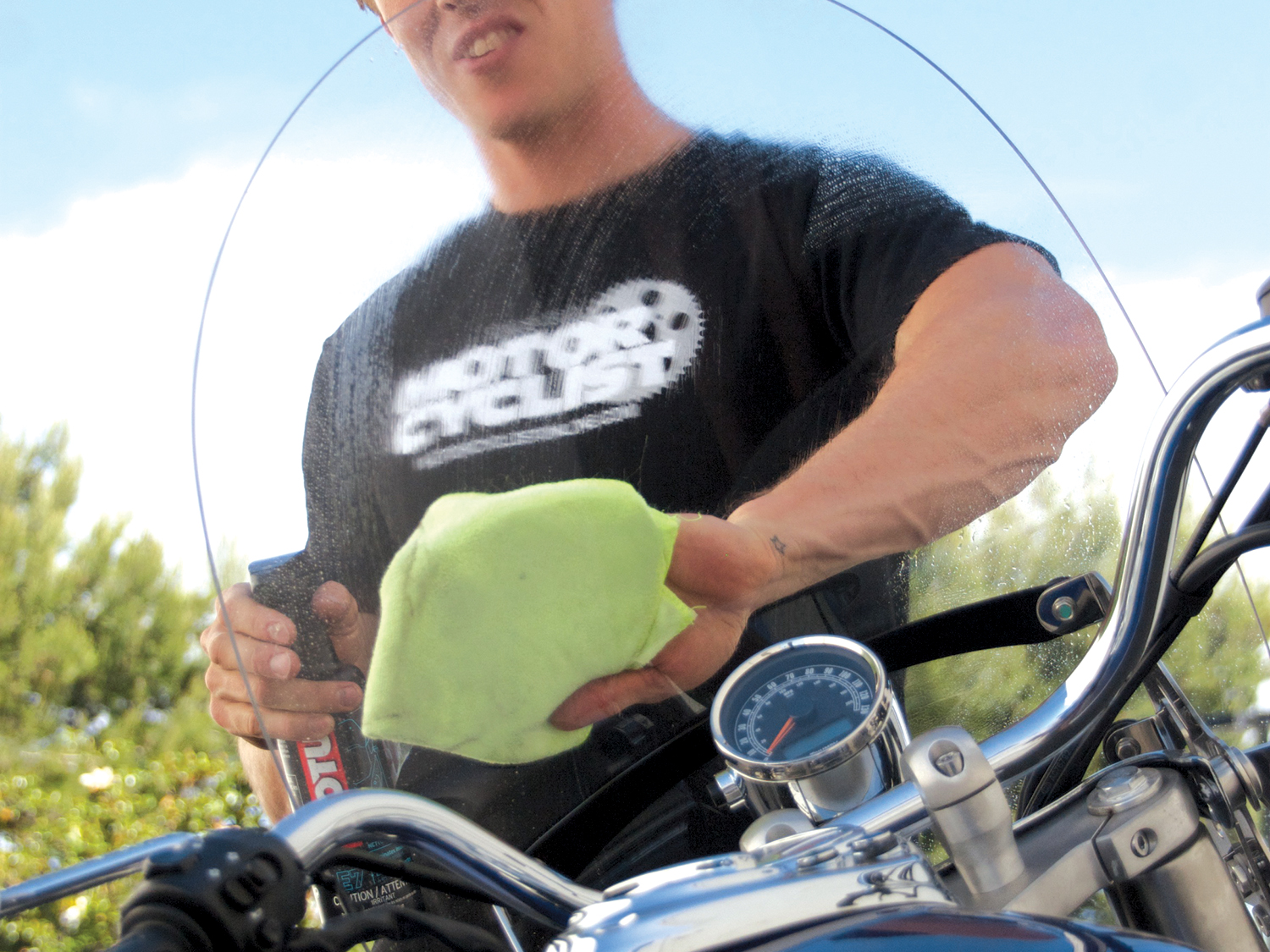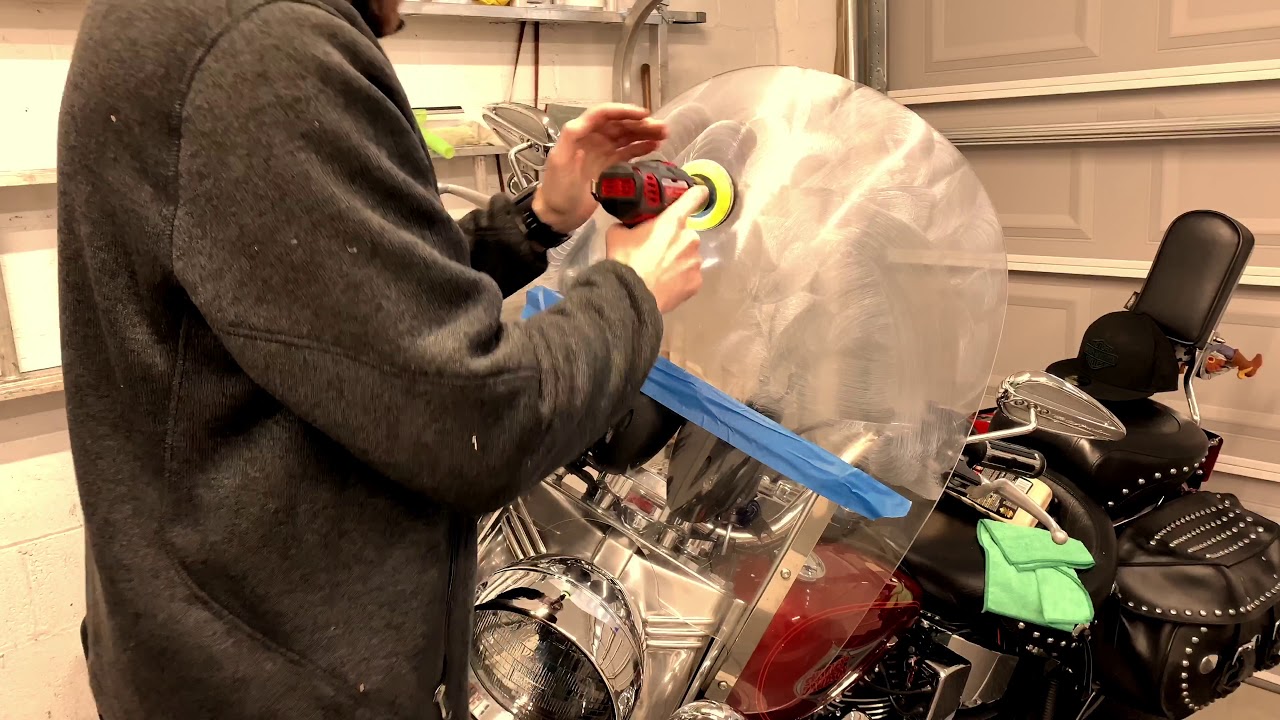While some bikes such as naked and streetfighters don’t have them, almost every other motorcycle out there has some type of windshield or wind deflector. Even then, for some people, the standard windshield is too small, too awkward, or, for the taller riders, too short. In the common saying about a market economy, “if there was no demand, there would be no supply,” and as such, a thriving aftermarket exists that is dedicated to providing you with the best windshield.
On the flipside of that, however, is the fact that there are so many types of windshields that it can become confusing as to which is the best one for your bike, and that does everything you want it to do. Some want touring windshields to keep the wind off of them for inter-city or continent-crushing long trips. Some want a lower profile sport deflector they can tuck down behind to gain those extra few miles per hour down the front straight at a track day.
To help out finding which is the right windshield for you, should you wish to replace your current one on, or add one to, your bike, we created this guide to help you.
The Main Types Of Motorcycle Windshields
Styles
At the highest level, windshields fall into one of four categories.
A touring windshield on a 2022 Harley-Davidson Road King. Image from webBikeWorld
Touring windshields are the tallest type, often found on ADV bikes and many long-distance cruisers. These windshields are designed to provide the maximum amount of wind deflection, often up and over the top of a riders’ helmet and around the sides of the body. The intention is to reduce rider fatigue from constantly battling against wind, rain, road debris, and the like, allowing for safer long distance travel.
A standard windshield on a 2022 Honda CRF300L Rally. Image from Honda Powersports
Standard windshields are shorter than touring windshields, and often carry more curvature to be more aerodynamic while also deflecting air up and over, or at least up to the helmet and around the sides of the body. You will often find these styles of windshields on dual-sport bikes such as the new 2023 Kawasaki KLR 650, or existing models such as the 2022 Honda CRF300L Rally, although they do sometimes appear on sport touring motorcycles.
Sport windshields on a pair of 2022 Ducati Panigale V4 R’s. Image from Ducati North America
Sport windshields are, not surprisingly, found on sportbikes and supersports. These are not so much windshields as wind-shapers, meant for you to tuck down under the airflow to maximize aerodynamics. They are very short, often quite curved, and are raked back at such an angle that if you were to ride as upright as possible, you’d be getting hit by wind from your chest on up.
Universal windshields are the final type, that don’t truly fit into any of the above categories and are often meant to be installed on naked sport bikes or cruisers that don’t have any wind protection available. They can vary wildly in size, shape, curvature, and price, but there quite literally are hundreds, if not thousands, of options in this category.
Materials
Motorcycle windshields in 2022 are made from one of two common materials.
Acrylic windshields are often used for standard or sport windshields, as they are relatively cheap to make, resist scratching, don’t fade under UV light, and are quite durable. They can also be colored or tinted and retain that color/tint for a long period of time.
Polycarbonate windshields are made from the same ballistic-level strength material that helmet visors are made from. The main advantage of a polycarbonate windshield is that it is extremely resistant to cracks and chipping, which is why a lot of touring windshields are made of the material. It is expected for touring windshields to be hit by gravel kicked up from the road, tree branches if on an ADV, and the like, with the only downside being that these windshields are generally twice, if not more, the price of an acrylic one.
Choosing The Right Windshield For Your Motorcycle
Usage
The very first thing you need to consider is “What kind of riding do I do the most?” Some people use their motorcycles for commuting and in-city runabout trips, while others may go on trips that can last days, weeks, even months. As well, if the bike is a trackday-only sportbike, then trying to hit maximum speed down the front straight with a touring-style windshield simply does not make sense.
Another bit of consideration about usage is that some windshields come with a quick-disconnect function. What this means is that if, for example, you ride a supermoto, you can ride comfortably to the course, then remove the windshield by flipping a couple of levers, get multiple laps of rear wheel sliding action in, then put it back on for the ride home.
Visibility With Touring Windshields
While this may seem like a “well, duh” consideration, a windshield at an improper height for the rider can actually block eyelines and even cause some optical illusions that trick your depth perception. For touring windshields, the general rule is that the top edge should line up between your lips and your nose when you are in your most common riding position, as this will cause any upward deflected air to pass over your helmet or just graze the top of it. It will also allow you to see over the top of the screen at a point 50 feet ahead on the road and beyond.
2022 Honda Goldwing Tour with the windshield adjusted properly. Note that the rider has good visibility over the lip of the windshield, but can also look forward and down through it if need be. Image from Honda Powersports
This is important because in the case of riding through a swarm of bugs on the highway, or the screen getting splashed with mud and dirt, you can still see over the top of it to navigate safely, and be able to see upcoming potholes, bumps, cracks, and the like in time to avoid or prepare for them. A good way to check this is by measuring out 50 feet from the middle of the bike seat to in front of the bike, and putting an object like a small cone, a brightly colored glove, or the like there. Go back and sit as you would when riding, and if you can just barely see the object over the top of the windshield, you’ve got it bang on right.
An Indian Chief cruiser with a full height touring windshield. Note that the top of the windshield is just above the eyeline of the rider, meaning it is adjusted perfectly. Image from Clearview Shields, a company that specializes in making custom windshields
On some motorcycles, especially distance cruisers and baggers, the front windshield is what is known as “full height,” meaning that the rider is almost entirely behind the height and width of the windshield. These are very specific types of windshields that are almost always made out of polycarbonate, and many are vented windshields, which we will explain in a moment. The above adjustment instructions still apply to these styles of windshields, as they are meant to keep the wind entirely and completely off the rider while also providing visibility down the road, except that you want the top of the windshield to be above your eyeline just enough that things are not warped by the polycarbonate forming the lip (see the image above). These windshields do need to be kept clean and polished, which we will discuss in the Maintenance section near the bottom of this page, for maximum visibility.
Visibility With Other Types Of Windshields
Most standard, sport, and universal windshields will only really come up to the middle of your chest when seated as if you were riding, so visibility while sitting up is not the major concern. In fact, you can buy “blackout” windscreens that are opaque to enhance the aesthetics of your bike, or provide an area of shade so you can see your instrument cluster better.
Looking forward from the saddle of the 2021 World SBK Ducati Corse Panigale V4 R, the racing version of the supersport road bike. Note the clarity of the screen and slightly concave shape of the tank, allowing the rider to fully tuck down behind the windscreen. Image from World Superbike Championship
The only exception to this is if you are buying a sport windshield for a bike that is either track dedicated, will be used often on a track, or is of the Cafe Racer style of motorcycle. These windshields should be as clear as possible, which is why you will often see a mechanic for a racing rider quickly polishing the windshield of a MotoGP or World SBK bike just before the rider takes it out for a formation lap or practice. The reason for this is so that in a full racing tuck, with your helmet’s chin bar and your chest pressing down against the fuel tank, you can see through the windshield as the air flows up and over your back.
To Vent Or Not To Vent?
Some of the taller standard windshields, and many of the touring windshields have the option of buying a version with two or four small vent holes along the bottom. Depending on how windy it generally is in your area, this can seriously affect your choice of windshield.
As a motorcycle passes through the air, the angle that the air meets the windshield (the “Rake” angle) determines how much of it is disturbed. Sport windshields, raked back to 70 or so degrees, are meant to provide as little disturbance as possible, whereas a full touring windshield on a cruiser is usually only raked back to 10 or 20 degrees. The larger the surface area that needs to push through the air, the harder your engine has to work, and the more buffeting you might experience if you are riding into a headwind.
An ADV windscreen on a 2015 Suzuki V-Strom 650. Note the two long, aerodynamically shaped vertical vents at the base, and the addition of a deflector “beak” at the top of the screen to shape the air as well as push incoming air higher over the helmet of the rider. Image from ADVPulse
Without going too deep into the physics of high pressure and low pressure dynamics, an area of high pressure will always want to occupy an area of lower pressure, until equilibrium. With a windshield causing compression and high pressure against the front of it, that air naturally wants to return to equilibrium, so it tries to occupy the area behind the windshield, creating vortices and increasing drag.
What those seemingly unimportant vents do is allow for some of that high pressure air to pass through behind the windshield, creating a more equalized pressure. As well, since the air flowing off the top of the windshield suddenly becomes low pressure as it flows over the lip and over your helmet, that pass-through high pressure air rides up the inside of the windshield and joins that airflow. This reduces drag exponentially up to a certain speed, increasing efficiency and reducing engine stress.
If you live anywhere where there is a lot of wind, like the“windy city” of Chicago or along the East or West Coast, having a windshield with those vents would be advantageous.
Bringing It All Together
With the considerations above, you should have a good idea by now of what type of riding you will be doing, whether or not you need to have a vented windshield, and how to find one that is of the correct height should you be looking at a touring or ADV style windshield.
Many aftermarket windshields, let alone OEM ones, are adjustable, most allowing for height, some allowing for rake, meaning you can fine tune it once it’s installed on your bike. The only time that you don’t, and often can’t, adjust the windshield is on a sportbike or supersport, although you can often change the material or shape of the windshield, for example to give a higher profile into the wind if you wear a 2XL or 3XL helmet that doesn’t tuck down all the way behind an OEM windshield.
Maintenance
Cleaning
While many would just say spray it with water and wipe it off, or use the windshield sponge-squeegee stick at a gas station, keep in mind that the material your windshield is made of is polycarbonate or plastic. Water does work, but sometimes something more aggressive is needed, in which case it is recommended to use a pressure washer or specific motorcycle polycarbonate cleaner products with a microfiber towel to get caked on bugs, grime, and dirt off the windshield.
You can clean your windshield as you also clean your bike. Note the vertical motion of the soap, meaning the owner is using the correct vertical strokes with lightly soapy water to clean the screen. Image from Motorcycle Screens EU
You do not want to use glass cleaner, of any kind, on a motorcycle windshield, as they contain chemicals in them that can react with polycarbonate plastics and make them turn “cloudy.” If you need to scrub at something that is solidly stuck to the windshield, using a silicone bristle cleaning brush gently to work away at it is the best method, with lightly soapy water or even visor cleaner formulated for polycarbonates.
As well, when wiping dry, always try to to be as gentle as possible, and always try to make any wiping motions vertically. That way, if you do cause a scratch, it will be hair thin or maybe not even visible from the saddle. Wiping in circular motions or horizontally can leave swirls and visible lines, respectively.
If all else fails, or you’ve just ridden through a swarm of flies hovering over the road, those sponge-squeegee sticks do work, but don’t be too aggressive and always apply and squeegee vertically.
General Maintenance
Just like the engine, wheels, brakes, chain, and other parts of your bike, you also need to do general maintenance on the windshield as well. Thankfully, there are only four major rules regarding windshield maintenance, two of which are more common sense than actual rules. Those two are:
If all else fails, a microfiber or two towels over the windshield will help reduce the UV exposure the polycarbonate or acrylic is exposed to. Image from Rider Magazine
- Park your motorcycle out of direct sunlight. Even if the windshield is rated as UV-resistant, the key part of that rating is resistant. It’s not UV-proof. The more sun the windshield is exposed to, the quicker the UV-resistance will wear down, and the sooner your screen may start to “yellow out.” Parking in a garage is the best option, but if not viable, a bike cover, or even a large enough piece of cloth over the screen will help reduce the overall exposure to UV that the windshield endures.
- Only use dedicated polycarbonate/plastic safe cleaners. If you want an effective and cheap solution, LCD computer monitor cleaner is extremely gentle and has to not affect the plastic of an LCD screen at all, to prevent discoloration. Visor cleaner is the next best thing, as almost every visor nowadays is polycarbonate. The best is a dedicated motorcycle windshield cleaner, and many of those have “starter packs” that also come with a silicone bristle brush, a couple of shammies or microfiber cloths, and instructions on how to best apply and clean with them
The other two major rules about windshield maintenance are a little more involved, and require diligence on your part:
A quick blast with a pressure washer after a ride to clean the windshield is a good practice, if you have one at home or visit a bay-style car wash with pressure washers. Image via Motorcycle Screens EU
- Wash your windscreen after every ride. If it’s just dust and a little dirt on it, a hose with a misting/spraying attachment is enough to just give it a quick blast down and then wipe it dry (gently, remember!) in vertical strokes. If you made a bug, bee, or some insect convert from three dimensions to two dimensions against your windscreen, warm water with literally a drop of dishwashing liquid (or special bug-lifting agent) and a soft-bristle silicone brush or microfiber cloth will help lift the greasy splatter. Rinse several times with clean water afterwards to get any soap residue off, then dry off.
- Polish your windshield every 10,000 to 20,000 miles. Over time, dust, dirt, grime, bugs, rain, and everything else will lightly scratch the wind-facing side of the windshield. Windshield polishing is a pretty delicate, but very doable, bit of maintenance that we will discuss in just a moment. The general rule here, though, is once the scratches start to be noticeable in their quantity, not depth or “quality,” it’s time to give your screen a polish.
Polishing
Perhaps the most delicate and time consuming part of maintaining your windshield, polishing is something that you need to develop a feel for. The goal of any polishing is to either fill in the light scratches of your windshield, or in more extreme cases, smooth down the polycarbonate for major striations. For those more extreme cases, it is better to have a specialist do the work, but for the first type, that’s an hour, some water, some polishing paste, a microfiber cloth and some elbow grease to do.
Wiping off polishing residue with a microfiber and windshield safe cleaner. Note the mostly vertical swipes to clean off the last few bits of the cleaner spray. Image via Motorcyclist
The first thing you want to do is give your windshield a thorough cleaning. Get all the dirt, dust, bugs, everything off the surface. Then, with a microfiber and polishing paste (it might also be called polishing milk in your local area), you want to wrap the cloth around a finger or two, dip it into the paste so you just get some paste on the cloth, and using extremely gentle, circular motions, polish out the surface scratches. A good sense of how much pressure you should apply, is to think of how you take your pulse at your wrist. Always be moving across the windshield as you do, as you don’t want to sit in one spot and grind away too much of the surface. Once you’ve polished the windshield, rise off the polishing paste with water over multiple passes, then once you’re sure all the paste is off, rinse it off once more with higher pressure (jet nozzle, pressure washer, thumb-over-the-hose-end all work), then using the gentle vertical strokes emphasized multiple times, dry it off. Tada! A clean, polished, clear windshield!
Using a small polishing attachment on a cordless drill and years of experience, this specialist is applying the lightest possible amount of force needed to polish, but not further scratch, a polycarbonate touring shield. Screen capture from “How to restore a motorcycle windshield from the YouTube channel of Eric Thomas Bland
If you are familiar with, and confident with, a polishing machine, you can use one of those on the windscreen to speed up the process.
If you don’t know how to use a polishing machine, and don’t feel too overly confident in your ability to polish using cloth and paste, that is nothing to be ashamed of. It might cost a little extra, but there are specialists at most motorcycle dealerships or shops that can do the polishing for you.

